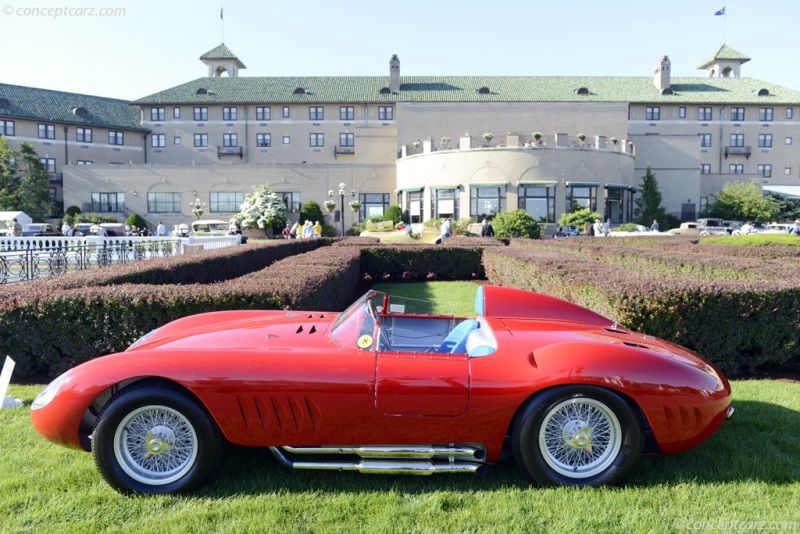Twenty-six examples of the Maserati 300S were built to contest the FIA's World Sportscar Championship. It would become one of the greatest sports racing cars of the 1950s and greatly contributed to Maserati's status as one of the greatest race car manufacturers of all time.
Spyder
Chassis #: 3072
Engine #: 3055
View info and historyHistory
The future is shaped by history, and for Maserati, its early years were spent forging a reputation for its motorsports endeavors on both two- and four-wheels. At the turn of the century, a Bolognese teenager named Carlo Maserati took part in racing competitions on a home-built motorcycle. His five younger brothers, including Alfieri, were also motoring enthusiasts and followed him into automobile pursuits. All of the Maserati brothers, except Mario, would become motor engineers, and even Mario contributed to the marque's foundation by designing its famous Trident badge, which is said to have been inspired by the statue of Neptune in Bologna, where the factory was situated at Pontevecchio. After years of building, repairing and tuning race cars, including managing Diatto's racing program, the Maserati brothers would build a road car that bore their surname. One of their earliest creations was driven by Alfieri to a class victory in the 1926 Targa Florio. As a low-volume automaker and catering to the wishes of its clients who raced in a variety of formulas, the early vehicles built by Maserati would have four, six, and eight cylinders - even race cars with sixteen cylinders were built by combining two straight-eights in parallel to one another. Racing was expensive, and the economic hardships of the 1930s eventually led to the brothers selling their shares in the company in 1937 to the Adolfo Orsi family. Per a ten-year contract, the brothers remained with the company serving in engineering roles. Once the contract was fulfilled, the brothers left the company and formed O.S.C.A. The Maserati company prevailed, joined by numerous engineering talents including Alberto Massimino, Giulio Alfieri, Vittorio Bellentani, and Gioacchino Colombo.In 1940, the Maserati company headquarters were relocated to Modena.
Spyder
Chassis #: 3072
Engine #: 3055
View info and historyPerhaps the most significant racing accomplishment by Maserati in the pre-World War II era was its back-to-back wins (1939 and 1940) at the Indianapolis 500 with their 8CTF. After the war, Juan Manuel Fangio won a number of victories racing under the Trident banner, including winning the world championship in 1957 in the 250F.The Maserati 300S
The success achieved by the 2-liter A6GCS sports-racing cars during the late 1940s would form the foundation for Maserati's sports and Grand Prix racers of the 1950s. The six-cylinder twin overhead camshaft engine was potent and durable, and the chassis developed by engineer Vittorio Bellentani was lightweight and nimble. Success in the smaller capacity classes encouraged Maserati management to explore a larger capacity class of sports car competition. Bellentani was directed to develop a 3-liter 6-cylinder model that combined the race-winning attributes of the 2-liter A6GCS with those of their 2.5-liter Formula 1 250 F. The Maserati 250F Grand Prix racer was powered by a 2.5-liter straight six, and at the time, was the largest engine at the company's disposal. It was installed into a developmental chassis and raced by Juan Manuel Fangio and Onofre Marimon in the Supercortemaggiore Grand Prix at Monza Autodrome. In order to compete with Ferrari and Jaguar, a larger and more powerful engine was needed. After enlarging the stroke, engine displacement grew to 2.8 liters, the largest size allowed by the engine block. Still down on power, the Maserati engineers began work on creating a larger version of the 250F motor. It would have the same 90mm stroke of the previous '2.8-liter' unit but a larger bore (84 mm) and a displacement size of nearly three liters.
Spyder
Chassis #: 3072
Engine #: 3055
View info and historyWith 9.5:1 compression (lowered from 12:1 partly due to the FIA regulations requiring the engine to be run on regular petrol/road car fuel), a trio of Weber carburetors (initially 42DCO3 and later 45DCO3), all-aluminum construction, and a twin overhead camshaft cylinder head, the engine produced 240 horsepower at 7,200 RPM on the company's dyno test beds. The engine was paired with a transverse four-speed gearbox and mounted in unit with the differential. They was installed in a 90.9-inch wheelbase chassis that had an overall length of 163.4 inches, a width of 57.1 inches, and a height of 38.6 inches. It was built from small diameter oval and round tubes (space frame construction) that made it lighter and more rigid than conventional designs. Early examples were constructed by Maserati but due to the labor-intensive process, later examples were entrusted to Gilberto Colombo's specialist company Gilco.Three of the first five 300S race cars were sent to America and into the care of Briggs Cunningham. The first three frames were too flexible, so modifications were made to numbers four and five. 
Spyder
Chassis #: 3072
Engine #: 3055
View info and historyThe front suspension used double wishbones with coil springs and dampers, while the rear had a DeDion axle with a transverse semi-elliptic leaf spring and hydraulic dampers. Large, finned drum brakes, the same as the 250F, provided the stopping power.The lightweight aluminum coachwork was designed and constructed by Medardo Fantuzzi, with a functional and attractive appearance.During the first season of racing (1955), the Maserati 300S was plagued by mechanical issues, but with ongoing development, it became a contender for outright victory. Revisions to the design in early 1956 witnessed a longer nose section which helped reduce air resistance. Through the production lifespan of the 300S, from 1955 to 1959, a total of three broad variants of the 300S would ultimately be developed, each one more effective than its predecessor. 
Spyder
Chassis #: 3072
Engine #: 3055
View info and historyAt the 1956 season opener at the 1000km of Buenos Aires, Stirling Moss and Carlos Menditeguy would emerge victorious. Moss would start 13 races in the Maserati 300S between 1956 and 1958, and three further races having started in different models. Of these sixteen events, Moss and the 300S would win on nine occasions, along with three second places, a third and a fifth and only two retirements. Included in this tally was a victory at the Nürburgring 1000 km (with co-driver Jean Behra, Taruffi, and Schell in a time of 7hr 43:54.5 minutes with an average speed of 80.658 mph).Maserati experimented with increasing the performance of the 300S by installing a V12 engine, but the project was scrapped in favor of the 4.5-liter V8 Tipo 450S. A total of three examples were given bored-out 300S engines and installed in modified 300S chassis. Stirling Moss and Denis Jenkinson drove the first car (chassis 3501) in the 1956 Mille Miglia. Crashed by Moss in the race, the chassis was later rebuilt as the first V8-engined 450S. The second car (chassis 3502) was later upgraded by the factory to the 450S specification and then sold to Tony Parravano. The third example (chassis 3503) was initially powered by the straight-six but was converted to a 3.5-liter V12 engine. These three cars, known as the 350S, did not have great success on the track. The Maserati 300S was successful in the salesroom and on the track. It was nimble and renowned for its road-holding capabilities, although it often was at a disadvantage because it was a 3-liter car racing at a time when there was no upper engine limit. Throughout its racing career, the 300S scored many wins, including victories in World Championship events.
by Daniel Vaughan | Oct 2006
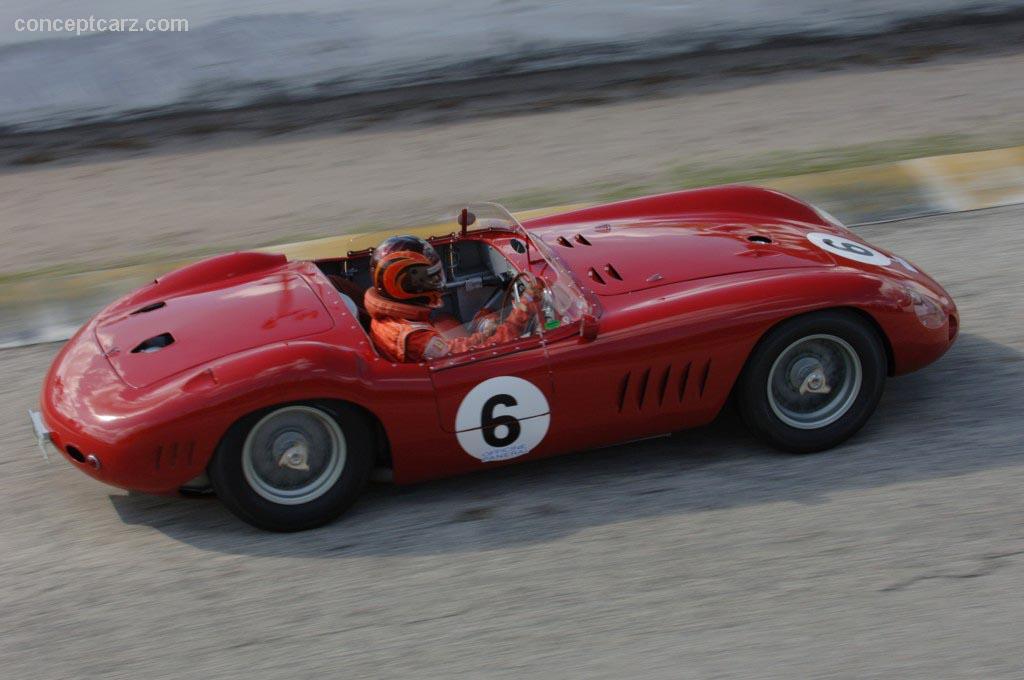
Spyder
Chassis #: 3072
Engine #: 3055
View info and history
The future is shaped by history, and for Maserati, its early years were spent forging a reputation for its motorsports endeavors on both two- and four-wheels. At the turn of the century, a Bolognese teenager named Carlo Maserati took part in racing competitions on a home-built motorcycle. His five younger brothers, including Alfieri, were also motoring enthusiasts and followed him into automobile pursuits. All of the Maserati brothers, except Mario, would become motor engineers, and even Mario contributed to the marque's foundation by designing its famous Trident badge, which is said to have been inspired by the statue of Neptune in Bologna, where the factory was situated at Pontevecchio. After years of building, repairing and tuning race cars, including managing Diatto's racing program, the Maserati brothers would build a road car that bore their surname. One of their earliest creations was driven by Alfieri to a class victory in the 1926 Targa Florio. As a low-volume automaker and catering to the wishes of its clients who raced in a variety of formulas, the early vehicles built by Maserati would have four, six, and eight cylinders - even race cars with sixteen cylinders were built by combining two straight-eights in parallel to one another. Racing was expensive, and the economic hardships of the 1930s eventually led to the brothers selling their shares in the company in 1937 to the Adolfo Orsi family. Per a ten-year contract, the brothers remained with the company serving in engineering roles. Once the contract was fulfilled, the brothers left the company and formed O.S.C.A. The Maserati company prevailed, joined by numerous engineering talents including Alberto Massimino, Giulio Alfieri, Vittorio Bellentani, and Gioacchino Colombo.In 1940, the Maserati company headquarters were relocated to Modena.
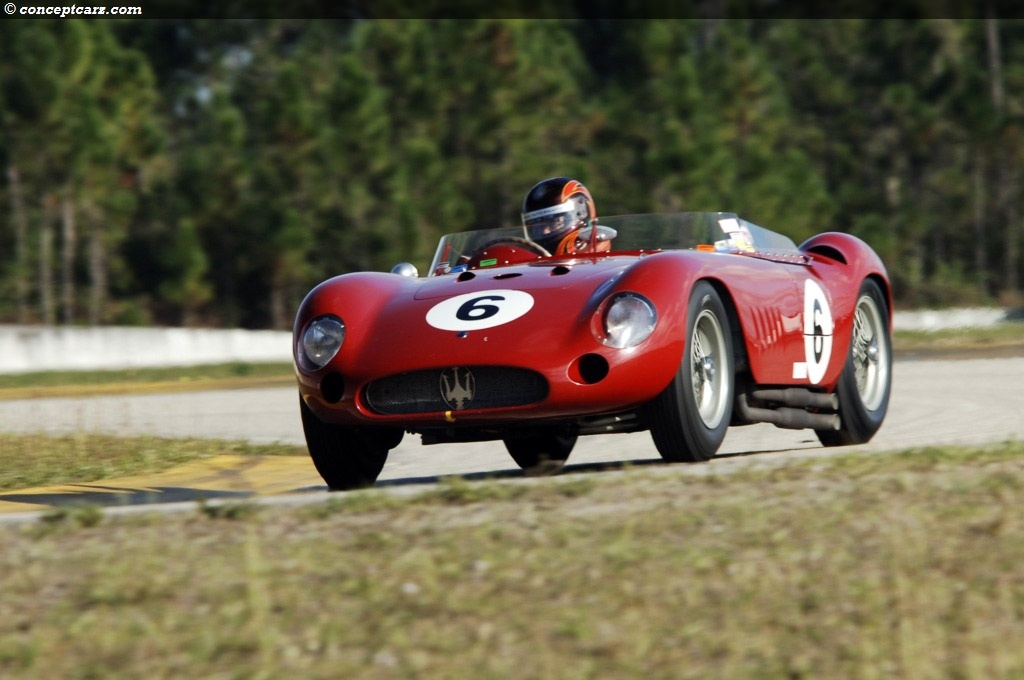
Spyder
Chassis #: 3072
Engine #: 3055
View info and history
The success achieved by the 2-liter A6GCS sports-racing cars during the late 1940s would form the foundation for Maserati's sports and Grand Prix racers of the 1950s. The six-cylinder twin overhead camshaft engine was potent and durable, and the chassis developed by engineer Vittorio Bellentani was lightweight and nimble. Success in the smaller capacity classes encouraged Maserati management to explore a larger capacity class of sports car competition. Bellentani was directed to develop a 3-liter 6-cylinder model that combined the race-winning attributes of the 2-liter A6GCS with those of their 2.5-liter Formula 1 250 F. The Maserati 250F Grand Prix racer was powered by a 2.5-liter straight six, and at the time, was the largest engine at the company's disposal. It was installed into a developmental chassis and raced by Juan Manuel Fangio and Onofre Marimon in the Supercortemaggiore Grand Prix at Monza Autodrome. In order to compete with Ferrari and Jaguar, a larger and more powerful engine was needed. After enlarging the stroke, engine displacement grew to 2.8 liters, the largest size allowed by the engine block. Still down on power, the Maserati engineers began work on creating a larger version of the 250F motor. It would have the same 90mm stroke of the previous '2.8-liter' unit but a larger bore (84 mm) and a displacement size of nearly three liters.
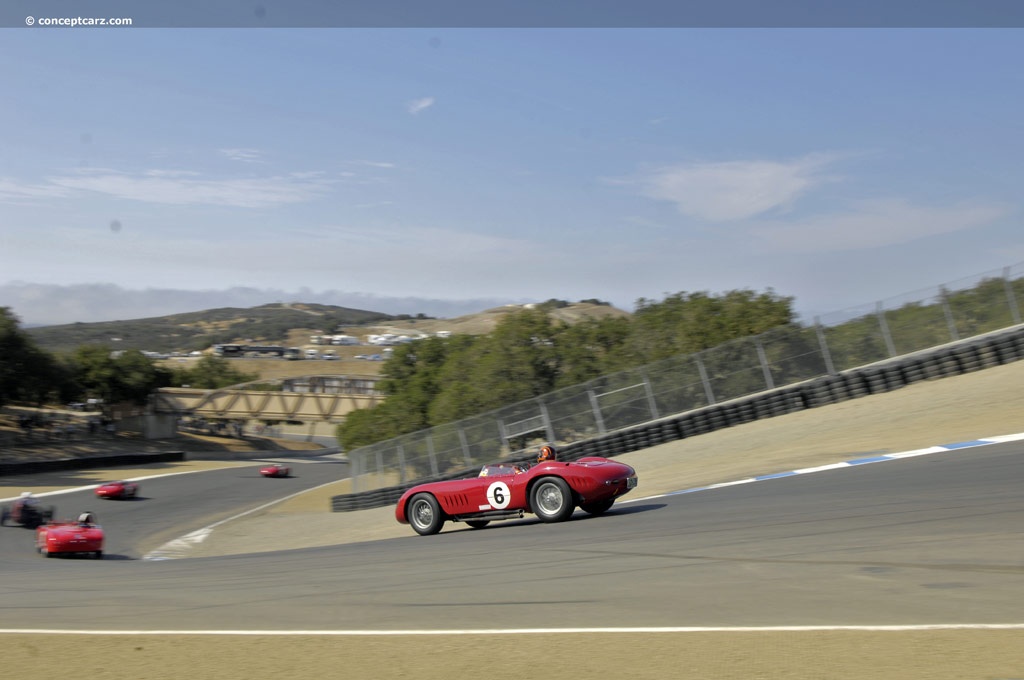
Spyder
Chassis #: 3072
Engine #: 3055
View info and history
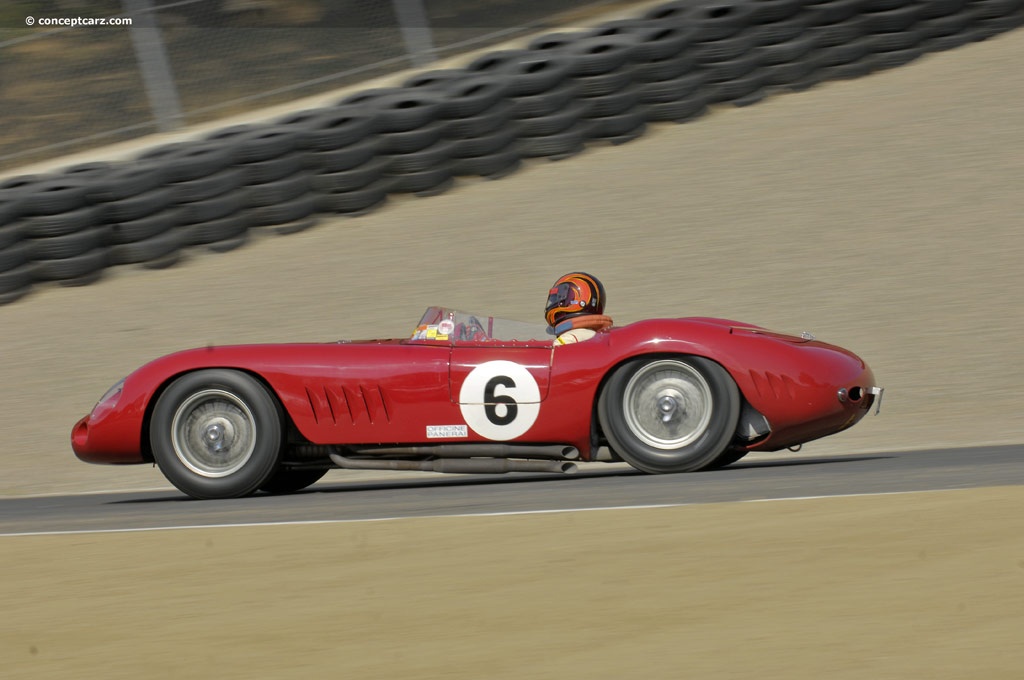
Spyder
Chassis #: 3072
Engine #: 3055
View info and history
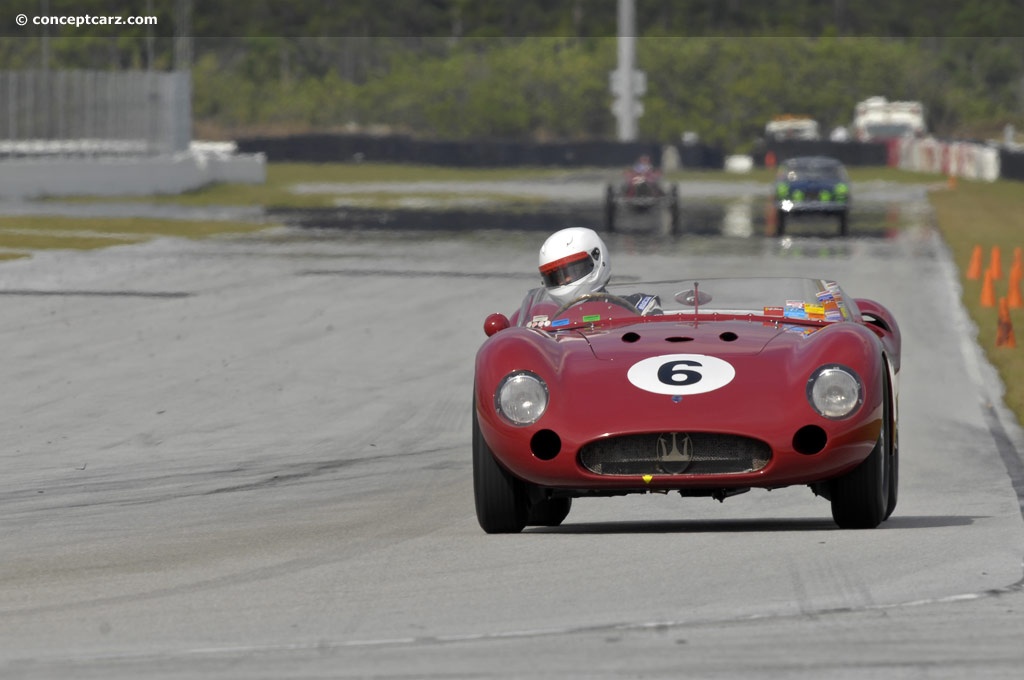
Spyder
Chassis #: 3072
Engine #: 3055
View info and history
by Daniel Vaughan | Oct 2006
Related Reading : Maserati 300S History
In 1953, the FIA started a World Sportscar Championship, similar to the Grand Prix and Formula 1 World Championship which began in 1950. The series featured many of the historic and prestigious races that were known through Grand Prix and Formula 1 racing like LeMans and the Mille Miglia. Maserati decided to enter the series but had little experience with large displacement engines their largest....
Continue Reading >>
Continue Reading >>
Similar Automakers
Similarly Sized Vehicles
from 1957
1957 Maserati 300 S Vehicle Profiles
Recent Vehicle Additions
Related Automotive News
Luigi Musso: Talented, Tempting and Troubled
Following Alberto Ascaris back-to-back titles in 1952 and 1953 there have been no Italian Formula One World Champions. While there has been a great amount of hope throughout the years, Italians have been left without a World Champion. Perhaps, it could...

Historic Maserati Race Cars And Team Transporter Visit Lime Rock Park Historic Festival
Englewood Cliffs, NJ September 4, 2013... Lawrence Auriana, respected globally in the historic racing community, shared some of the treasures in his collection including some very special Maseratis at The Lime Rock Park Historic Festival this...

1954 24 Hours of Le Mans: A French Bull Runs to Victory at Le Mans
Everything needs to be right amongst drivers competing for victory in the 24 Hours of Le Mans. Not only do they need to share the car over the course of a whole day but their driving styles must compliment each other. In the case of the 1954 24 Hours...

1957 Italian Grand Prix: A True Nobleman Stands Amongst Two of F1's Most Noble
The sea of spectators overwhelming the circuit would be a truly awe-inspiring sight to behold. The vast majority of this horde was there to celebrate the car adorned in red finishing in the top three. The cars driver, a true royal, would stand amongst...

1958 Moroccan Grand Prix: British All the Way
After years of frustration, and well past his life-expectancy, Mike Hawthorn would be on the verge of his first World Championship. This was more than likely Hawthorns last and best hope at a World Championship title. Just one last race, and a fellow...




























